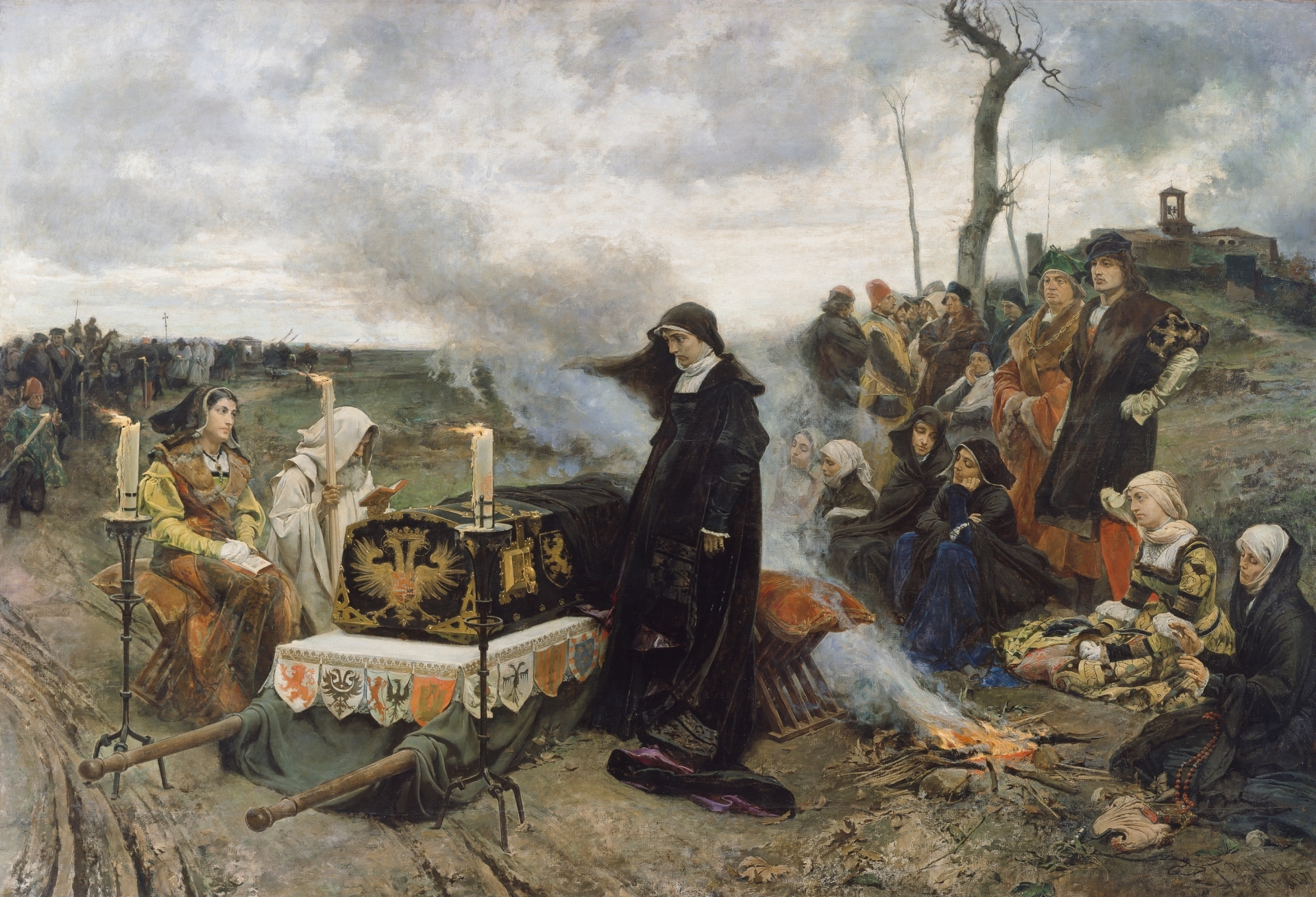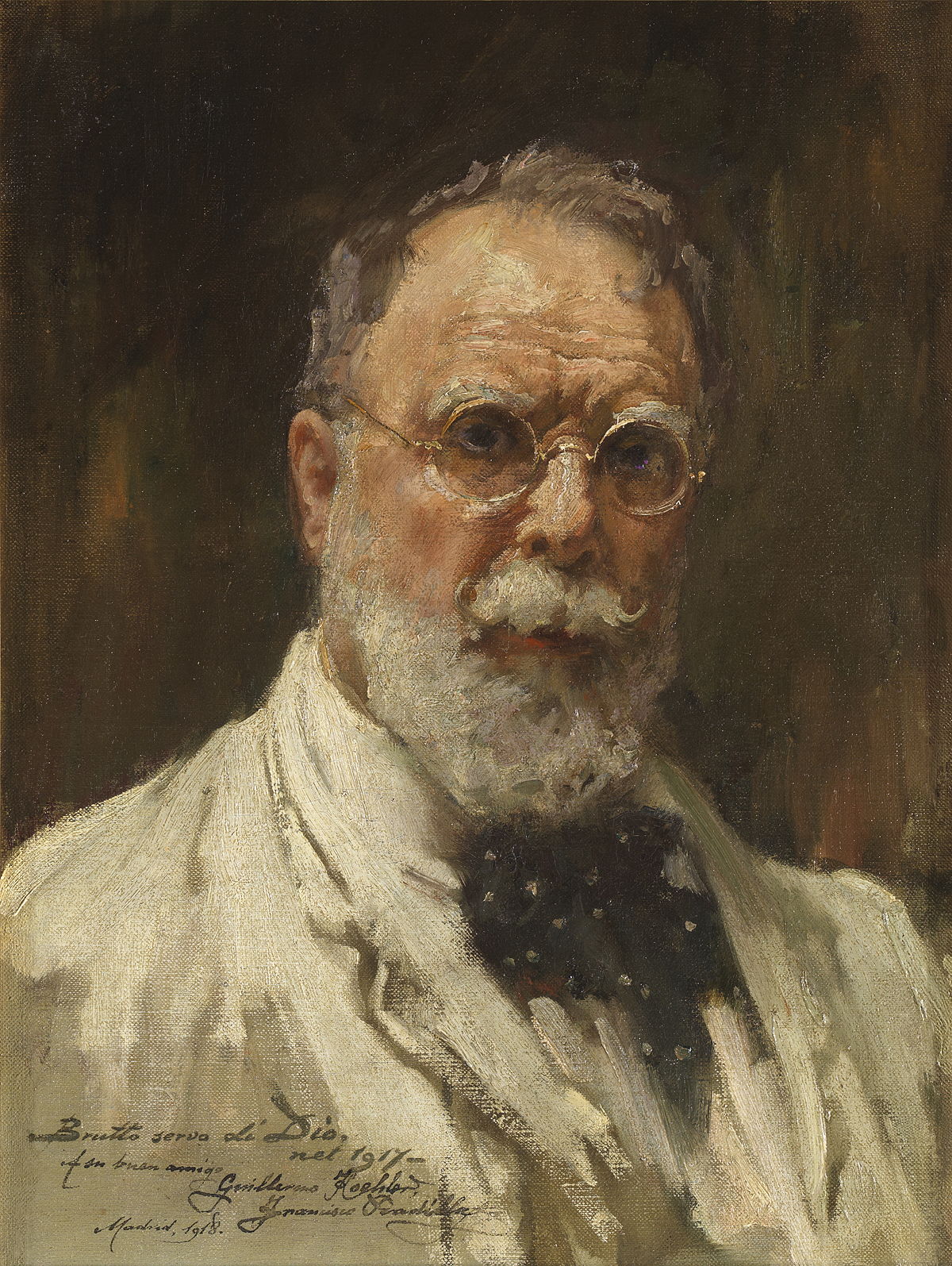Doña Juana, Queen Joanna I of Castile, was the daughter of Ferdinand II and Isabella I, the Catholic monarchs of Spain. She married Philip I; however, he died relatively quickly of a fever, possibly typhoid. After following his casket around Spain for a year, she was sent (read: banished) to the convent of Santa Clara in Tordesillas where she reportedly suffered from mental illness until her death in 1555.
In this 1877 painting by Francisco Pradilla y Ortiz, Doña Juana la loca, the widowed queen accompanies her late husband’s casket on its way to the Royal Chapel of Granada where it ultimately will be interred. She is also visibly pregnant with their daughter Catalina of Austria. Here we see that her grief has expanded past its saturation point and begins to manifest itself physically and behaviorally. Poor Juana: she’s distraught but the mourners are past mourning. They wait patiently yet are bored and disinterested. She’s wholly alone and although Pradilla establishes her in the center of the composition, he articulates her emotional isolation in the faces of the courtiers in the procession. This is the moment when she becomes la loca.
If we consider the emotional sum of what this woman had endured at this moment we might reassess this mad appositive. She was grieving her unfaithful husband whom she loved passionately and who conspired with her father to keep her from the throne. The veracity of her grief is a tribute to the love she had for this man, and with this in mind we might reevaluate this madness as Doña Juana shrugging off the mantle of propriety and indulging in humanity.
- Patti Sanders


 Francisco Pradilla y Ortiz
Francisco Pradilla y Ortiz